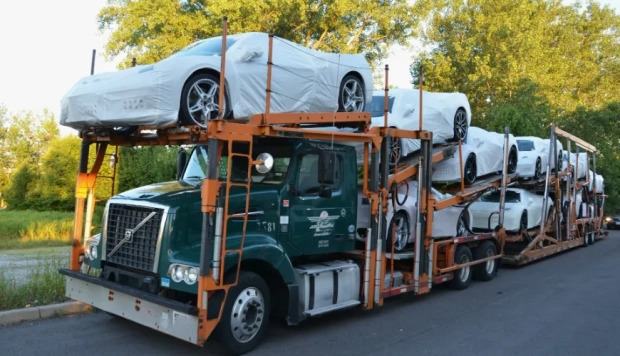Exploring Nature and Science in Children's Storybook Adventures

Writing a book that kids actually remember?
Books about science and nature are being written to create adventures that children never forget. But they do not stop there…
This children's book genre is currently having a real boom. We're talking about growth from $15.9 billion in 2023 to a projected $24.5 billion by 2031.
Writing a kids book about nature and science
There is, however, an additional constraint, since it is not enough to highlight cool facts. The story needs to be strong enough to capture the imagination of the young reader while subtly inserting important learning.
Tools such as a title generator for book projects will be your friend before you even start writing, helping you find attractive titles that draw both children and parents in bookstores.
What we will see:
- Why nature and science books are booming
- The formula for writing a STEM children's book
- Making complex concepts accessible (without boring the children)
- Practical examples that really work
- Getting started on your children's nature and science book
- The future of nature and science books for children
Why nature and science books are booming
Here's something that might surprise you…
Books about nature, science and STEM in general are currently one of the fastest growing categories among children's books. Parents and educators are looking for books that can make learning fun rather than homework.
And there's more to that.
Kids these days have a lot of screens and instant entertainment. But books like these do something else. It's about sparking the imagination of what's around us.
Think about it. When a child reads about an ant colony or how rainbows are formed, they learn not just facts, but a way of critical thinking that will serve them throughout their lives.
Books blending science, nature, and art are gaining serious traction and publishers are on the hunt for titles that both children and their parents will be happy to read.
The formula for writing a STEM children's book
Want to know the secret of some of the most successful nature and science children's books?
The difference between good and bad.
A successful nature and science book for children is all in the approach. It doesn't bore them with facts and explanations. On the contrary, it draws them into a world and learning becomes natural.
So let's take a look at how the pros do it:
- Start with something amazing, not a fact. Blow their minds right from the start. A volcano erupting. A butterfly waking up from its chrysalis. The first raindrop of a storm.
- Use characters that kids can relate to. Whether you're writing about a curious young scientist or an animal hero, make them likeable.
- Show, don't tell. Rather than saying "Plants need sunlight to grow", draw a picture of a seed reaching up towards a window.
- Stay scientifically accurate. Kids are smart, and they'll know when science is made up. Do your homework, and get it right.
Magic happens when you take a scientific concept and weave it into a story that kids care about.
Making complex concepts accessible (without boring the children)
Let's talk about a problem that all nature and science writers face…
How do you explain the life cycle of a butterfly or why leaves change colour without losing your readers?
The secret is to break it down.
Complex scientific processes become accessible when you:
- Use analogies and comparisons the kids understand. The heart is like a pump. The root is like a straw sipping water from the ground. These make big concepts easier to grasp.
- Focus on one concept at a time. Don't try to cover every part of the rainforest in one book. Focus on one topic and really explore it.
- Make it interactive. Encourage kids to explore nature themselves. "Look for ants next time you're in the garden. Watch where they go."
- Tell it through pictures, too. Work with illustrators who can visually show kids scientific processes in a way that complements the text.
Kids have huge imaginations. Give them the building blocks and they'll build up the rest.
Practical examples that really work
Let's look at some tips that work right now by examining successful books.
Think about some books that are really popular in bookstores right now and they are usually nature and science titles. Life After Whale or Hurricane by Jason Chin are absolute hits. The secret? Solid scientific research, combined with a narrative capable of captivating children from the start.
Another very popular type of children's book? Stories that follow specific animals or natural elements in different situations. Kids like to follow a character they can get attached to, even if that character is a leafcutter ant or a tidepool.
And the pattern you will find?
- A strong narrative from the first page
- Scientific accuracy in every line
- Beautiful illustrations that complement the understanding of the concepts
- A text that does not underestimate children
The best books do not talk down to children. They treat young readers as intelligent and capable of understanding complex concepts when presented in the right way.
Getting started on your children's nature and science book
So you're ready to start writing your very own nature and science book for children?
Your action plan
Choose something you are passionate about. The first ingredient in any children's book is fun. Your love for what you're writing about will be reflected in your writing. If you're passionate about monarch butterfly migration, the kids will feel that.
Do your research. Talk to experts, read academic articles, watch documentaries. You need to really know your subject before you can simplify it for kids.
Then comes the fun part. Find your narrative hook. What's the thread that will carry the children through the book? Is it a single raindrop's journey through the water cycle? Is it a seed's transformation into a mighty tree?
Remember to consider the age range you're writing for. Kindergarten children need different vocabulary and sentence complexity from fourth graders. Know your audience.
The future of nature and science books for kids
Here's what to expect in the future…
Interactive elements are becoming huge. Think about books with augmented reality components, QR codes leading to videos or experiments to try at home. These are changing the way kids read and learn from science books.
Books that are also increasingly in demand are those on eco-friendly themes. Environmental issues and climate change are now major concerns, so books teaching children about conservation, sustainability and care for our planet have never been more relevant.
Publishers are listening. Interactive audio formats have grown by approximately 52.8% between February 2023 and February 2024, which is an indication of how the industry is beginning to be reshaped by new technologies.
In conclusion
Nature and science children's books have a bit of magic.
When a child experiences the wonder of the world around them, through a nature and science book, those are moments they will not only remember but treasure.
The key is not to underestimate young children while making complex topics accessible through the narrative. Do not oversimplify to the point of being boring. Do not complicate to the point of confusion.
Find that middle point where curiosity meets understanding and that is where your books will live and that is where you will be able to write books that children will treasure forever.



